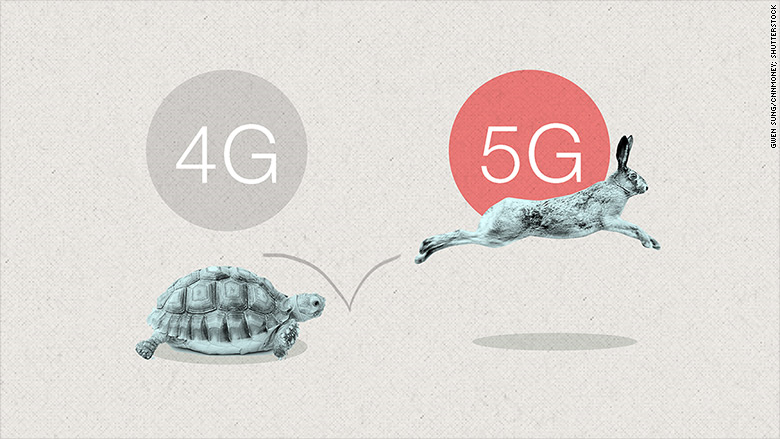Understand the difference between 4G and 5G
With 4G, wireless broadband, streaming, gaming, and intensive data usage become practical. Because of 4G Networks. The capacity, speed, and processing power of networks are now increased by 5G. It’s also important to note that network technology is a major factor in how much battery life our devices use. Every use case, from smart gadgets to industrial robots, may be accommodated by 5G networks.
While 4G networks are still in use and will continue to coexist with 5G networks, 5G is currently the hot topic. What specifically can you accomplish with 5G that you cannot with 4G, then? Giving a concrete use case from a consumer standpoint is currently challenging. However, there are distinctions between 4G and 5G, and via this story, we will learn just how 5G might alter connected lives and experiences.
How was 5G technology developed?
Through the 3GPP organisation, the 5G technology was developed in collaboration with a wide range of businesses and organisations around the world. This indicates that it was developed by businesses from around the world that had competence in a variety of industries and technology. A mobile device made in India will be able to be used in any other country on a different cellular network thanks to global standardisation and interoperability.
The Solution is 5G:
With 4G, wireless broadband, streaming, gaming, and intensive data usage become practical. Because of 4G Networks. However, 5G increases capacity and speed. Radio waves can only carry so much data, depending on the technology employed and the frequency spectrum. Some users may have a better experience when several users connect to a single cell site, while others may experience a degraded network. This issue is resolved by 5G, which increases the capacity for many devices to connect at once. The consumer network experience consequently gets better. In order to increase capacity and enable a variety of new types of smart devices and industry digitalization with creative use cases, 5G was built.
Utilizing Batteries Effectively
Do you realise that network technology also has a big impact on how much power our devices use? These tiny devices with limited battery capacity stay connected on 5G Networks for longer periods of time as 5G Networks handle the IoT use cases. Depending on the kind, a 5G Network antenna needs very little power (less than 1 W to a few hundred watts).
5G Radio Frequencies:
The following radio frequencies are used by 5G networks: High-band (26 GHz), Mid-band (3300 MHz), and Low-band (1 GHz). Successful 5G band spectrum auctions took place in India, and carriers bought the bandwidth they felt would best serve their business needs and complement the existing spectrum. However, additional frequencies where 4G is now in use could potentially be used for 5G deployment. Depending on the utilisation condition, the 5G and 4G networks can also dynamically exchange spectrum.
More Devices Can Be Connected With 5G:
While 4G networks gave us a taste of the speeds, 5G is required to take things to the next level. On 4G networks, we must have already encountered crowded networks in densely populated places. The 4G networks’ clogged pipes are to blame for the latency and video buffering. The main goal of 5G networks is to address this issue. In order to handle as many as 1 million devices per square kilometre, 5G networks intelligently and precisely transmit to each individual device.
5G is planned Not just for mobile devices
Only mobile devices have a big role in 4G or lower generation networks; connection is more of a one-size-fits-all phenomenon. The goal of 5G, though, is to connect everyone and everything to wireless networks. Every use case, from smart gadgets to industrial robots, may be accommodated by 5G networks.
Beyond a Network: 5G
We have always emphasised how 5G offers end users a better experience. While enterprises and end users could access cloud services thanks to 4G networks, 5G networks come with built-in processing power. The 5G network can conduct processing jobs like a dispersed data centre. Edge computing can significantly aid in bringing the power of processing closer to the user, lowering the load on mobile devices, boosting performance, and conserving battery for smart devices that use AR, VR, smart glasses, and gaming use cases.
Slice Your Network
5G networks can function as multiple distinct networks at once. Network Slicing, a 5G technology, is to thank. For certain use cases, such as those in the medical, industrial, gaming, etc., you may need priority. Prioritizing network functionality and facilitating the necessary network experience are both possible with 5G network slicing. You will therefore have a faultless experience while playing games or engaging in other data-intensive activities. In 4G, there is no such feature.
Latency
Latency The amount of time it takes to send a data packet between two sites is known as latency. Currently, 4G has a 50 millisecond delay. A better latency of about 1 ms is provided by 5G. A fantastic streaming experience is facilitated by such a minimal latency.
Coverage:
Millimeter waves (26 GHz) require more infrastructure deployments because they provide less coverage than the other 5G Bands (700 MHz and 3300 MHz). The realistic situation will always be different when it comes to wireless networks in real-life use scenarios, regardless of the theoretical coverage estimates we discuss. Small cell deployments may be able to help in these circumstances by extending coverage.
–Broad coverage is provided by 5G low band spectrum at 600, 700, 800, and 900 MHz.
–Coverage and capacity are provided by 5G mid-band spectrum at 1800 MHz, 2100 MHz, 2300 MHz, 2500 MHz, and 3300 MHz.
–26 GHz of 5G high-band spectrum offers extremely fast speeds over short distances.
Mid-band spectrum, or spectrum in the 1 GHz to 6 GHz range, is thought to be perfect for 5G since it can give capacity and coverage by carrying large amounts of data over long distances. Because communications can’t travel very far, the millimetre wave spectrum is constrained.
In terms of mobile connectivity and broadband, let’s not fully ignore the wonders that 4G has unleashed for us. With the advent of 4G internet, the digital world greatly expanded and became crucial to every aspect of our lives. Fast 5G rollouts in India have given our 5G networks a global footprint and scale.



